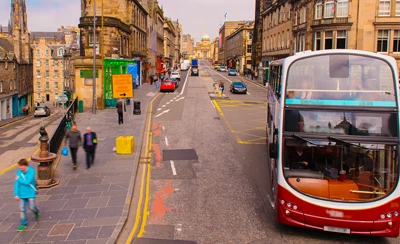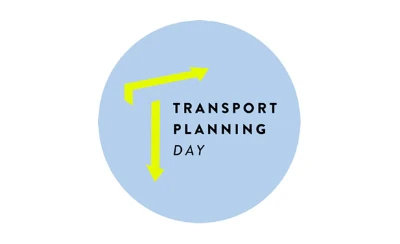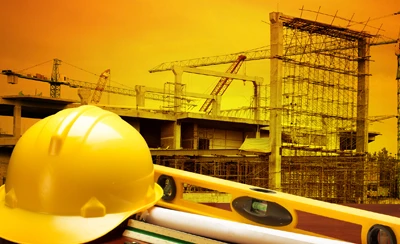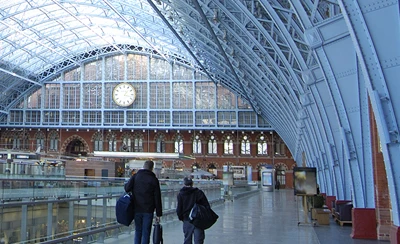Should we consider the bigger picture more often?
Andy Martin, an Urban Planner working on transformational schemes in London, shares his reflections on a TPS event ‘From Best to Better: Planning for Transport and Better Places in London was held on 26 September 2019’

The modern transport planner knows that transport doesn’t just happen in isolation. Transport works in tandem with new developments, with regeneration and with efforts and activities to get people out of their cars. It is a catalyst for change or a response to change. Transport is a vital tool for living a happy, healthy and fulfilling life but it is closely intertwined with its context.
As planners there is only one true future scenario which we should plan for: a sustainable one. Be it in the private, public or non-profit sector, every transport planner is, at least in theory, working towards achieving this common goal. All too often it feels like the real concept of sustainability is misused, or forgotten completely; yet it is key in guiding the decisions that we, as planners, make for the collective good.
Being clear on sustainability
There are three recognised pillars to sustainability: social, economic and environmental. Only when all three of these pillars of sustainability are achieved do we really have a desirable outcome.
Something which may be socially and economically sustainable may have a terrible impact on environmental sustainability. Similarly, something may be economically and environmentally sustainable or viable, but may serve to only increase further the enormous social divides for which we all ultimately pay the price.
Electric cars, for example, may be seen as the answer to our sustainability woes due to using ‘clean’ energy, yet they do little to address systemic inequities in how we use our street space, not to mention the impact that making and disposing of their components has on both the planet and the wider geo-political climate.
This can also be applied within the wider concept of land uses. For example, building nothing but housing and pushing our food sources further away from our city, instead of promoting urban agriculture, makes our way of life less, not more, sustainable.
Understanding the impacts of these decisions is a vital skill for transport planners.
The United Nations sustainable urban agenda
Even the United Nations has put a spotlight on transport and urban planners. It outlines 17 sustainability goals from good health and wellbeing, to reduced inequality, and even dedicates one of these specifically to sustainable cities and communities. This is explored further in the UN-HABITAT’s New Urban Agenda which puts the transport and urban planning at the heart of implementing this substantive global vision of sustainability.
The agenda calls on urban practitioners to promote access for all to safe, age- and gender-responsive, affordable, accessible and sustainable urban mobility through:
- A significant increase in accessible, safe, efficient, affordable and sustainable infrastructure, including prioritising non-motorised modes
- Equitable, substantive transport-oriented development that minimises displacement and features affordable, mixed-income housing and a mix of jobs and
- Better and coordinated transport and land-use planning, which would lead to a reduction of travel and transport needs, enhancing connectivity between urban, peri-urban and rural areas
- Urban freight planning and logistics concepts that enable efficient access to products and services, minimizing their impact on the environment and on the liveability of the city and maximizing their contribution to sustained, inclusive and sustainable economic growth
To put it another way, the United Nations recognises transport planners – people like us – as critical to delivering a sustainable world. The UN sustainability goals and the New Urban Agenda are arguably our single biggest mandate for a coherent worldwide vision on urban sustainability. I worry that in the day to day, we are losing sight of these goals.
Applying sustainability to the transport planning day job
How often have you, as a planner, or an urbanist, really thought about what your projects, schemes or areas do to support all three pillars of sustainability, as part of a global sustainable urban agenda?
In our day to day we might lose sight of this bigger picture. Every day we deal with model outputs, transport assessments, traffic counts, cost-benefit analysis ratios – you name it, there’s a tool for it. But in our zeal to deliver seemingly amazing transport schemes and cities, have we lost sight of the bigger picture? While it might not always feel like it, the cumulative impact of our work has an enormous impact on people’s lives and the world we inhabit. And we need to remember this.
The strength of the 21st century transport planner is its ability to straddle a multitude of disciplines. Planning does not happen in a vacuum, nor do we plan for one single moment in time. Similarly we should remember that planning our cities should not be detached from other places, people and the real reason why we are all here. The global sustainable development goals are tools in our toolkit as well as important obligations as professionals. Let’s make use of them.
Only when we achieve socially, economically and environmentally friendly outcomes can we truly call ourselves good transport planners. This goes far beyond defending a cost-benefit analysis; this is us as the guardians of our societies and the future of this beautiful place we call home.
We need to get better at stepping back and judging our projects against the three pillars of sustainability. Transport Planning Day 2019 might be one of those opportunities to continue this conversation – I hope you can join us.
Find out more about TP Day 2019 on the 20th November
Picture of the author - Andy Martin









